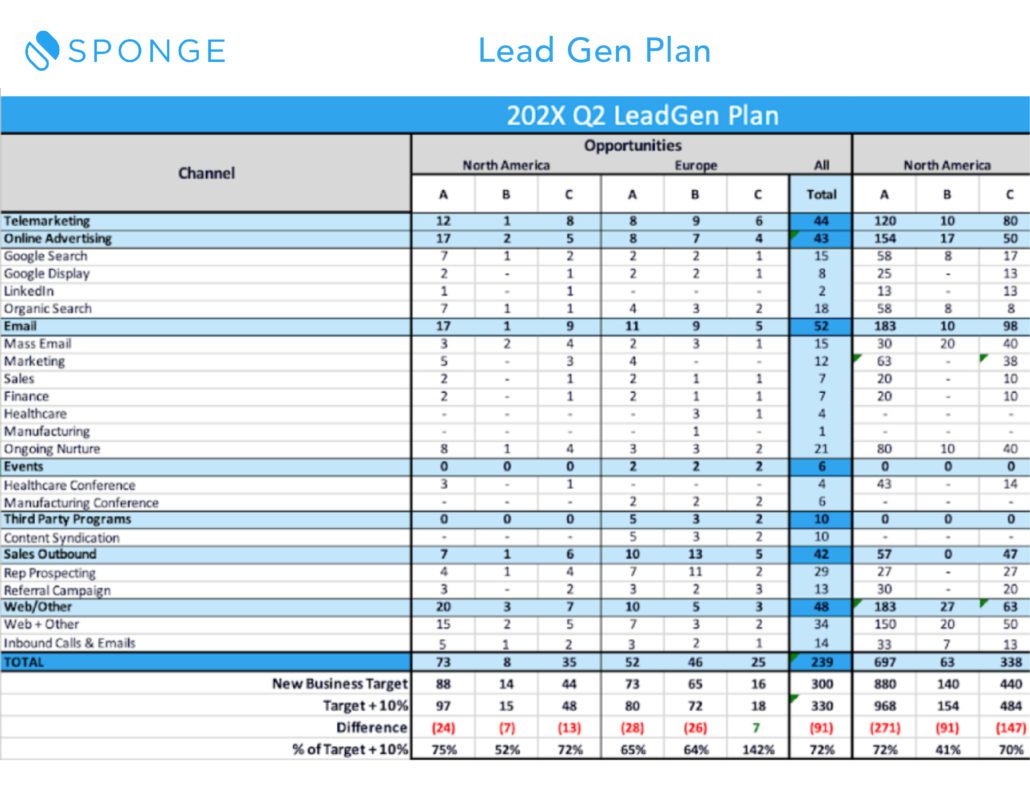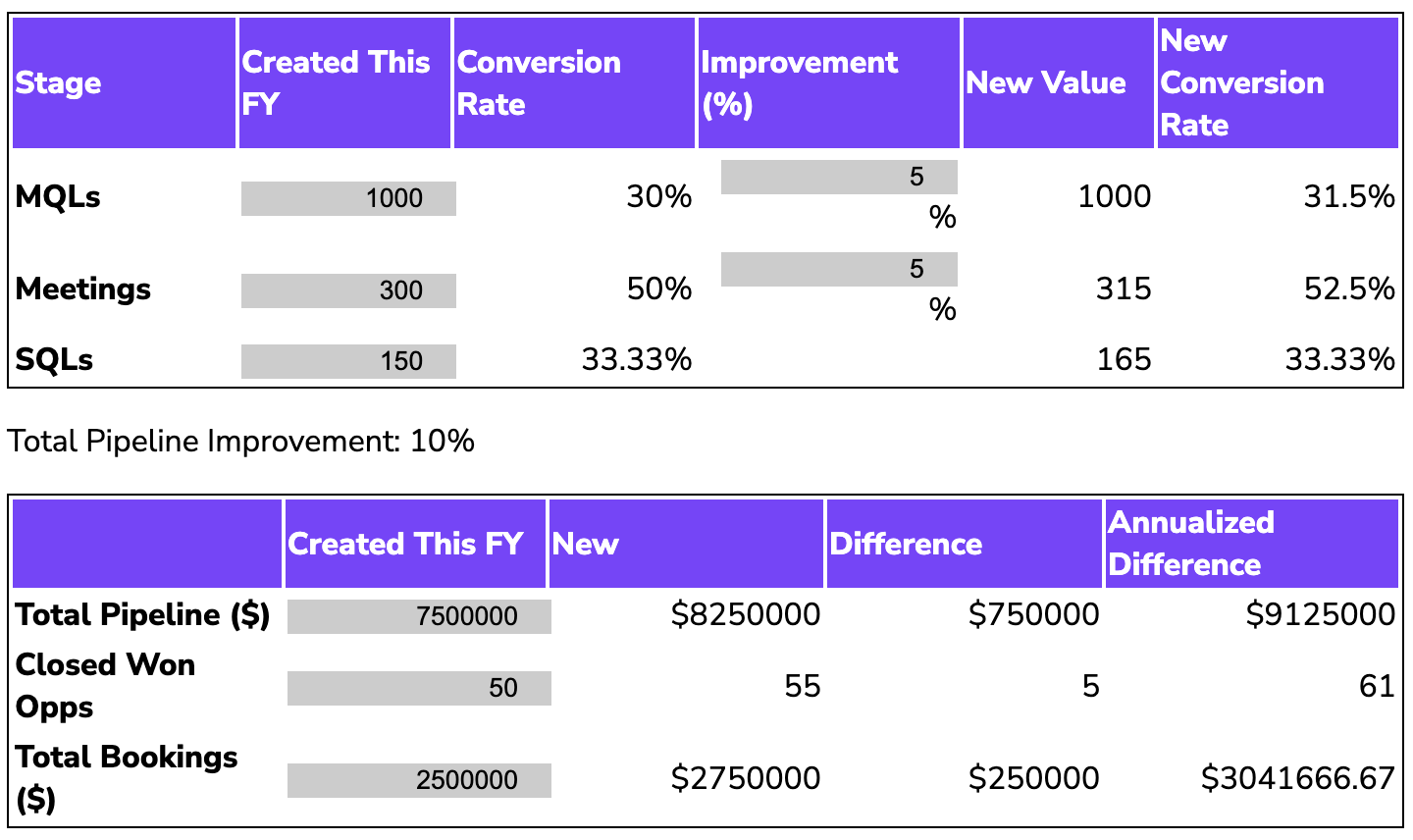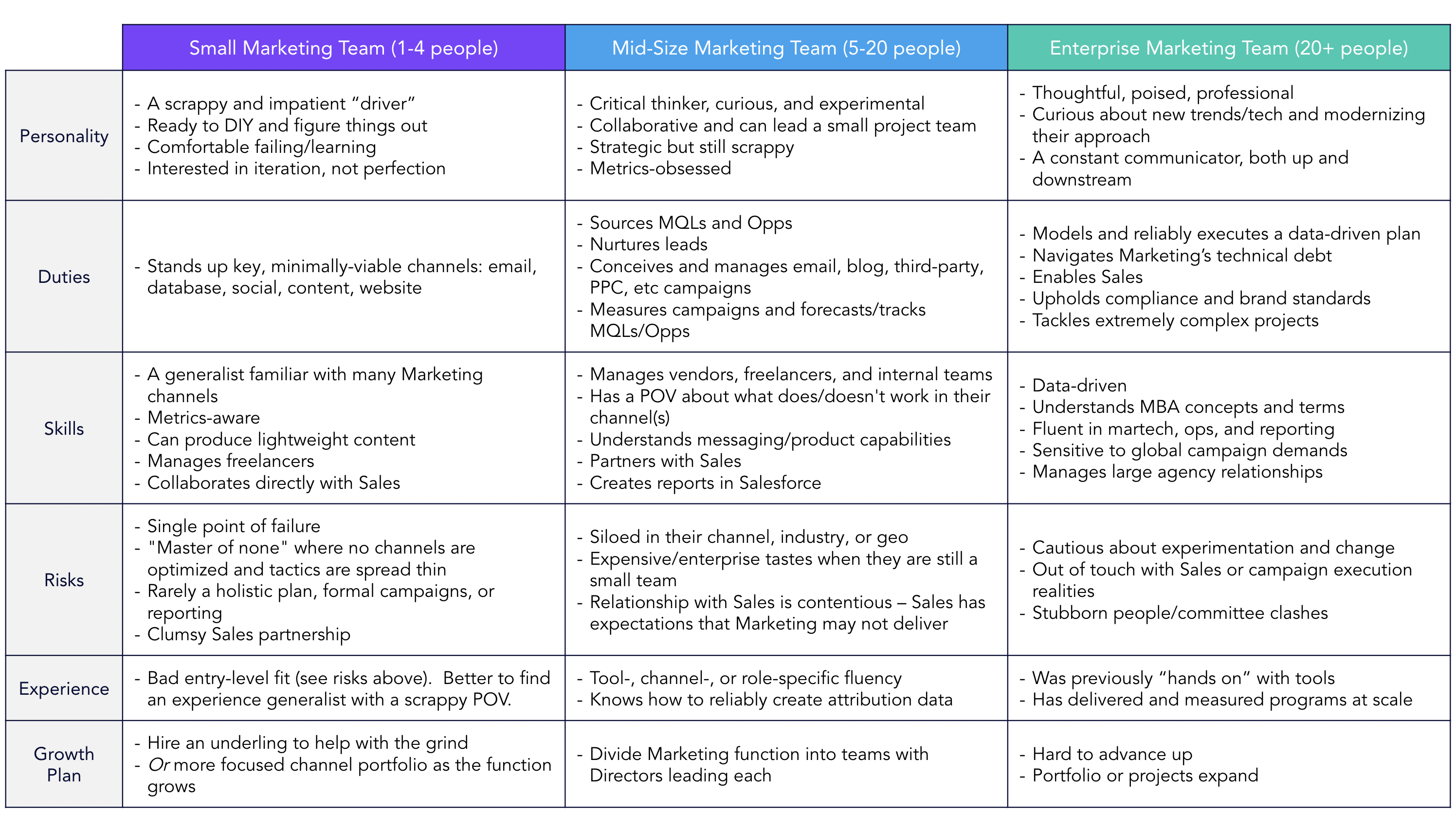Real talk: hope is not a strategy! Your marketing campaigns have to add up to revenue. As an economist-turned-marketer, I take solace in quantifying problems and working from tangible plans. Enter the demand gen model. Think of it as your Mission Control. I’ve spent hours creating formulas, formatting cells, and tinkering with this template to align your distant company revenue goals with the Opportunities and MQLs you need to generate every month.
>> Related: How to Negotiate a Bigger Marketing Budget <<
How the funnel has shifted
Even if you hit your some goals, post-pandemic/stagflation funnel metrics have definitely shifted. We’re seeing:
- some campaigns surprisingly worked or underperformed
- trade shows and in-person events are still lightly attended
- a lot of teams are trying to dig out of a lead deficit
- win rates changed as people put purchases on hold or rushed to fill a gap
- pricing is dropping and sales cycles lengthening
- layoffs have limited what campaigns can even be executed
- annual revenue goals changed, with specific geographies or products newly prioritized
- marketing efforts are focusing on existing business
The path forward
Using a model, we want to validate what shifted and create new assumptions: What is realistic and achievable? Once we quantify the new reality, we can reallocate resources to the tactics that are still fruitful.
This template includes opportunity models for new and existing business (because the assumptions are likely different), and a lead gen plan. You plug in:
- your revenue goals
- sales capacity
- sales cycle
- ASP
- and funnel conversion rates
The model will do the rest and calculate how many Opps you need. And it will show you the cost of the leads and opps to get there.
Honestly, the first time you do this, you’ll probably have a CRAZY number of opportunities you need to generate, at a wildly out-of-budget cost.
That’s when you go back to your exec team, finance, and your sales leaders to say “Okay, if we want to get to these revenue numbers, in this environment, this is what needs to change.” An open conversation about poor assumptions helps lift the burden off marketing’s shoulders. And it’s a far more convincing negotiation when you’re armed with the model – rather than just suspecting the goals and budget aren’t achievable.
Video: column-by-column tutorial
In this workshop I go column by column through the entire demand gen model, helping explain how you can personalize it with multiple geographies and products.
I hope this tool helps you regroup, get organized, and focus on the next six months. I’m also happy to review your work! Just get in touch ⬇️
Real talk: hope is not a strategy! This robust Lead Gen Plan template maps how many leads and opps you need to generate each quarter.




